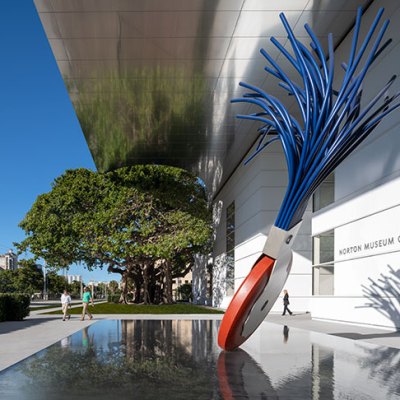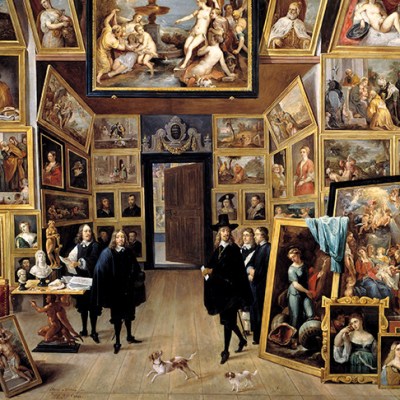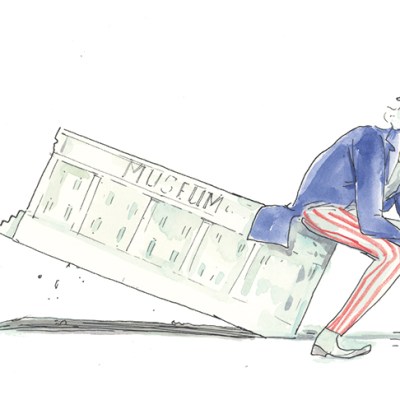The Shed, the purpose-built arts venue that opens today, sits like an enticing parcel waiting to be unwrapped among the sparkling, cloud-kissing towers of Hudson Yards on Manhattan’s Lower West Side. Dreamed up in 2008 in the depths of the financial crisis, it took more than a decade to become a reality. The final cost, including funds for its programming, will be more than half a billion dollars. How will New Yorkers benefit?
The opening programme is impressive: a series of Shed-commissioned premieres that mix up the visual and performing arts in fresh ways. Reich Richter Pärt takes place in a cathedral-sized hall hung with Gerhard Richter’s work, including tapestries and colourful paintings inspired by stained glass and close observation of patterns. A dozen singers wander among visitors chanting Arvo Pärt’s composition followed by performances of Steve Reich’s score, both inspired by Richter’s art, bringing visual and aural senses together. For her work in the Griffin theatre (Kenneth C. Griffin gave $25m), poet-essayist Anne Carson wrote a monologue for actor Ben Whishaw and then added song and invited the soprano Renée Fleming to take part, too. Together the performers recount the improbably connected lives and myths of Helen of Troy and Marilyn Monroe in Norma Jeane Baker of Troy. In the huge McCourt space (Frank McCourt gave $45m), Turner Prize-winner and Oscar-winning film-maker Steve McQueen directs a five-night concert series of African-American music performed by living legends and emerging figures; together they set out the ‘musical family tree’ of spirituals and blues, jazz and gospel, rock and roll, and more, demonstrating the impact of African-American music across the arts in the US.
Renée Fleming and Ben Whishaw at the Jerwood Studios in London in rehearsals for Anne Carson’s Norma Jeane Baker of Troy, directed by Katie Mitchell, with music composed by Paul Clark. Photo: Stephen Cummiskey
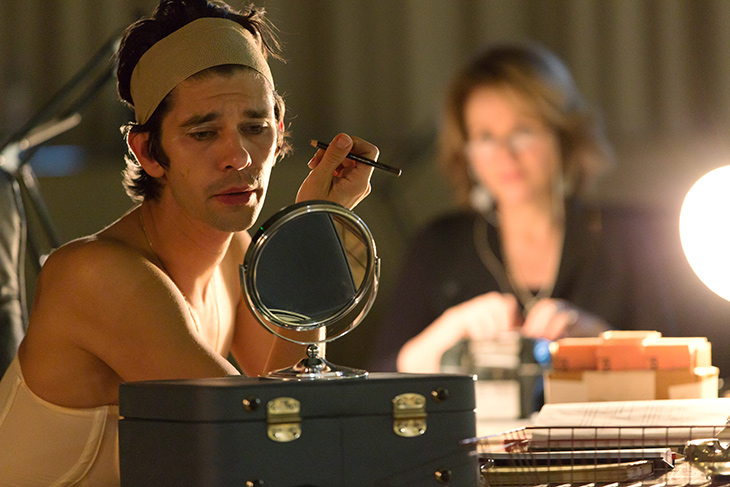
The architects of the Shed are among the city’s favourites: Diller, Scofidio and Renfro (with Rockwell Group in a collaborating role). They tweaked the Lincoln Centre to transform it from tired to vivacious, and they are renovating and expanding MoMA. But they are best loved for the High Line park on a disused elevated railway line stretching from the Whitney Museum of American Art to Hudson Yards, which re-energised the whole area. Of the Shed, Liz Diller recalls: ‘In 2008 it was a dotted line with a question mark and the words “cultural facility”. […] It began without a client but with an ethos.’ As the businessman John Tisch, a major supporter from the start, said: ‘this is about the future of New York City and we the citizens need to be involved’. The goal was to create, Diller says, ‘a building to be responsive to every kind of artist in a future we did not know about, so the building would always be in flux and must be flexible for all disciplines’. Thanks to the building’s ‘telescoping outer shell’, the McCourt space can expand on wheels to double its footprint, or contract to be tiny and intimate. Building techniques are industrial: ‘we call it architecture of structure, it has no fat’. There is no back of house or front of house; it is a single, unified entity.
Installation view of Reich Richter Pärt in the Shed, New York, 2019. Photo: Timothy Schenck. Courtesy the Shed
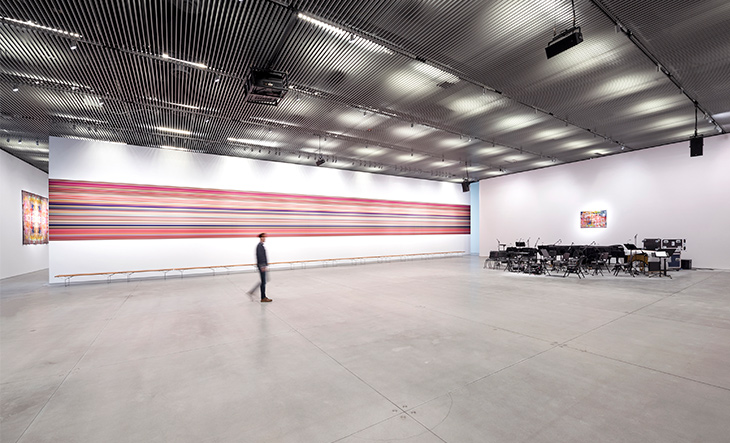
The all-things-are-possible Shed adjoins DS+R’s soaring apartment tower, 15 Hudson Yards, and nestles below sleek cliffs of glass and steel by a bevy of fellow star architects: Kohn Pedersen Fox, Foster and Partners, and David Childs with Skidmore, Owings & Merrill. Among the high-end shopping mall, the hedge fund offices, the luxury apartments and restaurants to match, Thomas Heatherwick’s Vessel comprises several floors of rising interconnected staircases arranged like open basketwork; it keeps energetic adults and children busy much like putting mice on a treadmill. There’s also a new Subway station. The 28-acre project by Related Companies is bigger than the Rockefeller Center and more expensive than any other private development in the US. The total cost for the Hudson Yards mini-city so far is rumoured to be $25 billion.
Amid such pomp, the Shed is a welcome surprise: a new kind of building in a newly created part of town, producing new work. Alex Poots, a Scottish impresario whose credentials include the Manchester International Festival and Park Avenue Armory, is artistic director and CEO. He says one of the main reasons for taking the job – ‘leaving the UK’ as he puts it – was the Shed’s strong sense of civic responsibility, a place seeking to ‘create parity among artists and audiences’. Tickets are relatively cheap; both known and unknown artists are core to the programme; there’s broad community involvement; financial commitment is impressive. ‘This is a place for invention, curiosity and risk-taking,’ he says. ‘It’s not about high art or low art. It’s fluid in all aspects: media, audiences, etc. Established and emerging artists are equal. It’s a new concept that will have to develop its audience.’
If Poots can keep pushing the boundaries of invention and keep up the quality, perhaps the Shed can – like Brooklyn Academy of Music (BAM), the Park Avenue Armory and Theater for a New Audience – dig its roots deep into fickle New Yorker’s lives, and encourage a few of what Diller dubs the 12,000 or so traditional ‘silos of the arts in New York’ to re-think how they operate. As Frank McCourt says, ‘This is a bold, daring and living example of civic imagination brought into reality for the greater good. In a world replete with cynicism the Shed is full of optimism.’
The Shed in New York opens on 5 April.
